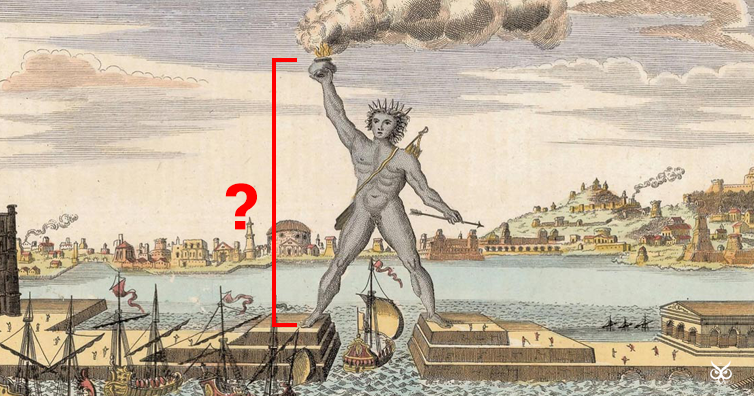Colossus of Rhodes; you know, that massive, ancient Greek statue that inspired Game of Throne’s Titan of Braavos. But have you ever wondered how big Colossus of Rhodes really was? I mean, in order to stand at the entrance of the harbor allowing for ships to pass underneath, it had to be huge, right?
Well, the answer may surprise you.
Colossus of Rhodes was built around 281-282 BC and it symbolized Helios, the Greek titan God that helped the Rhode’s win the war over the ruler of Cyprus. However, the image we all know and love has nothing to do with how the statue really looked like in real life. (the article continues after the ad)
According to most sources, including Pliny the Elder, the statue was 110 feet (33 m) tall – pretty much just like the Statue of Liberty without the pedestal. If we include the base, its total height was around 125 feet (38 m).
The myth suggesting that the legs of the statue were open so that ships could pass underneath was originally projected by Italian De Martoni who visited Rhodes between 1394 and 1395. This version however, cannot be true since the statue’s leg opening would have to exceed 1300 feet (400 m). Based on its height, the right dimension of its legs should have been around 65 feet (20 m) which is too small to be used as an entrance to the harbor.
Even though we can’t be 100 percent sure, the statue should have been depicted naked, standing in an upright position with either both or at least one of its arms attached to its body – and that’s for balance. Because of its enormous size, the statue would not have been able to support outstretched hands. Also, its legs should have been joined together or with just a small, reasonable distance between them. In fact, if the one arm was stretched out as many believe, Colossus of Rhodes should have been quite similar to the Statue of Liberty:
Even the location of the statue is uncertain as many historians suggest that Colossus of Rhodes was not near the harbor, but rather near the temple of Helios which, to be honest, makes a lot of sense – after all, the statue was made to honor Helios.
Interestingly, many European architects proposed a plan to rebuild Colossus of Rhodes.
If you like what you read, then you will definitely love this one: The Surprising Reason Why Men In Classical Statues Are Kind Of… Small
Photo: Nathan Hughes Hamilton / Flickr
Photoshop: I’m A Useless Info Junkie
Sources: Colossus of Rhodes, Greece, c.280BC | Politics and culture in international history | There’s a Plan To Rebuild the Colossus of Rhodes

